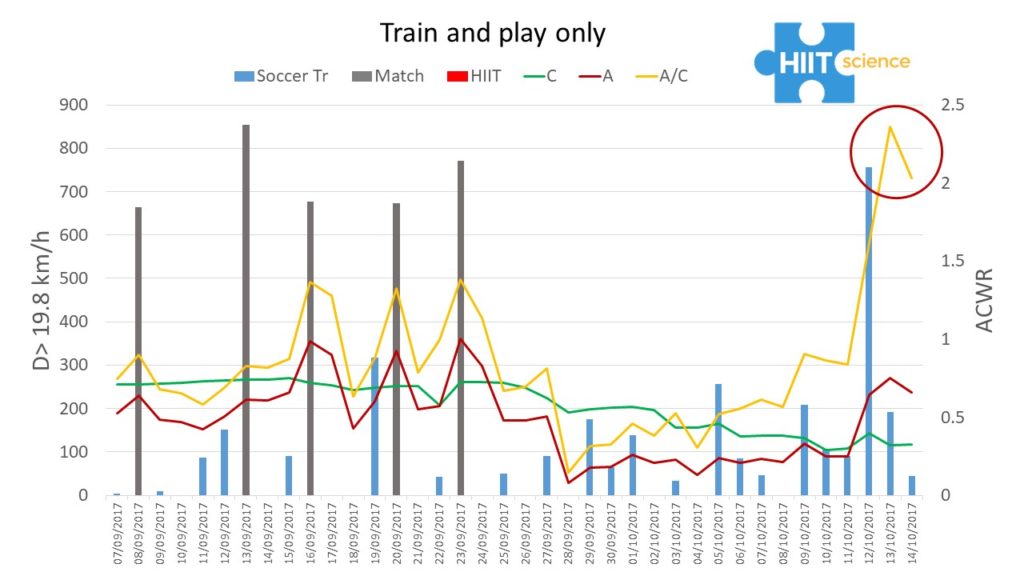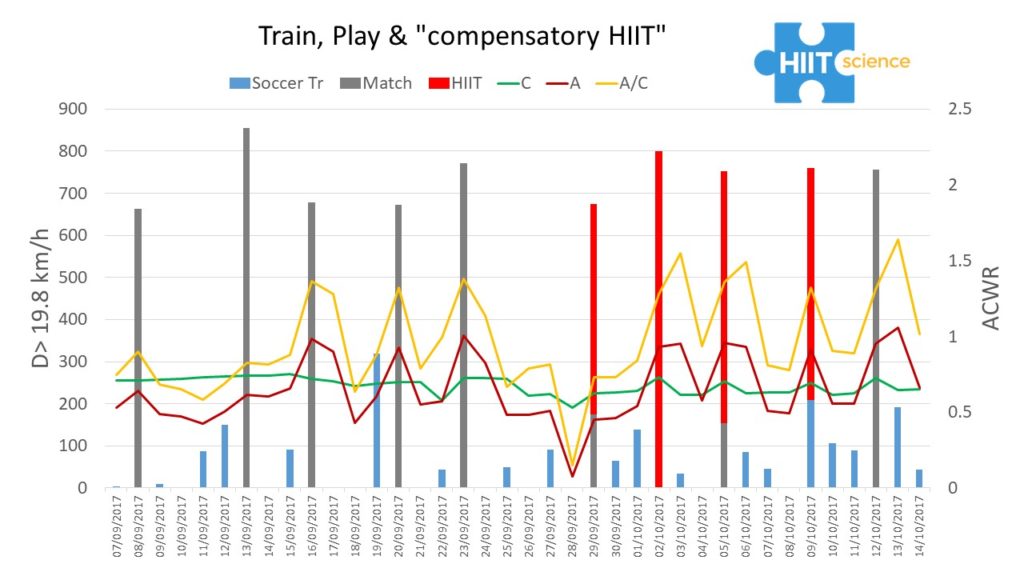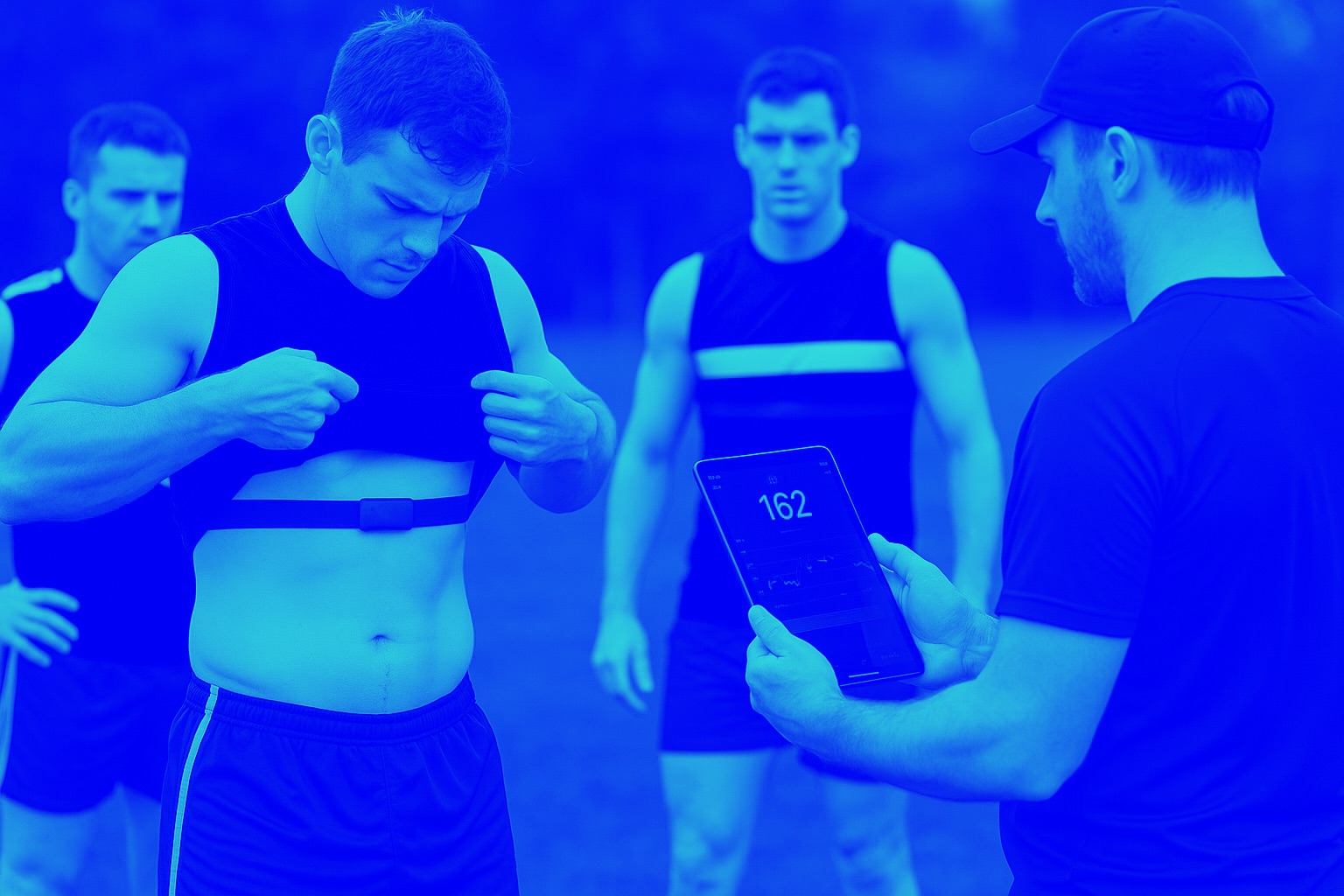Managing high-speed running load in professional soccer players: The benefit of high-intensity interval training supplementation
M. Buchheit, Sport Performance & Science Reports, 2019, March, 53, V1
A recent expert-led Delphi survey of key football performance practitioners operating in teams across the Big 5 Leagues (Bundesliga, English Premier League, La Liga, Ligue 1, Series A) showed that high-speed running (HSR) management was the most effective strategy for preventing lower-limb injuries (1). It is with this particular view that I wrote a recent short paper, published in the free, open-access journal, Sport Performance & Science Reports.
The SPSR article gives a detailed example of the HIIT sessions used, both with and without the ball, and suggests how they may be implemented seamlessly alongside the competition schedule to 1) maintain HSR load stable when players don’t compete (Figure 1), and 2) avoid spike when they play again (Figure 2). Our HIIT Science book and course provide even greater specifics on the science and application of HIIT for those interested in the topic.

Figure 1. High-speed running distance (>19.8 km/h, HSR) covered during training and matches in a midfielder (22 y-old, playing in a 1st division club) during a 5-week in-season period. The acute (A) and chronic (C) load were calculated over 5 and 20-d periods, respectively. ACWR: A/C workload ratio. A spike (A/C >2) in HSR is shown with the red circle. GPS (training) and semi-automatic (matches) locomotor data were integrated with calibration equations. Note that while the match sequence is real, the actual dates have been changed to ensure anonymity.

Figure 2. High-speed running distance (>19.8 km/h, HSR) covered during training, matches and supplementary high-intensity interval training (HIIT) in a midfielder (22 y-old, playing in a 1st division club) during a 5-week in-season period. The acute (A) and chronic (C) load are calculated over 5 and 20-d periods, respectively. ACWR: A/C workload ratio. GPS (training) and semi-automatic (matches) locomotor data were integrated with calibration equations. Note that while the match sequence is real, the actual dates have been changed to ensure anonymity.
Reference
- Fanchini M, Pons E, Impellizzeri F, Dupont G, Buchheit M, McCall A. Exercise-based strategies to prevent muscle injuries. Muscle injury guide: Prevention of and return to Play from muscle injuries. 2019;Chapter 1:34-41.



